The Danube: Europe’s River of Cultures, Conflicts, and Cooperation – A Historical Tapestry
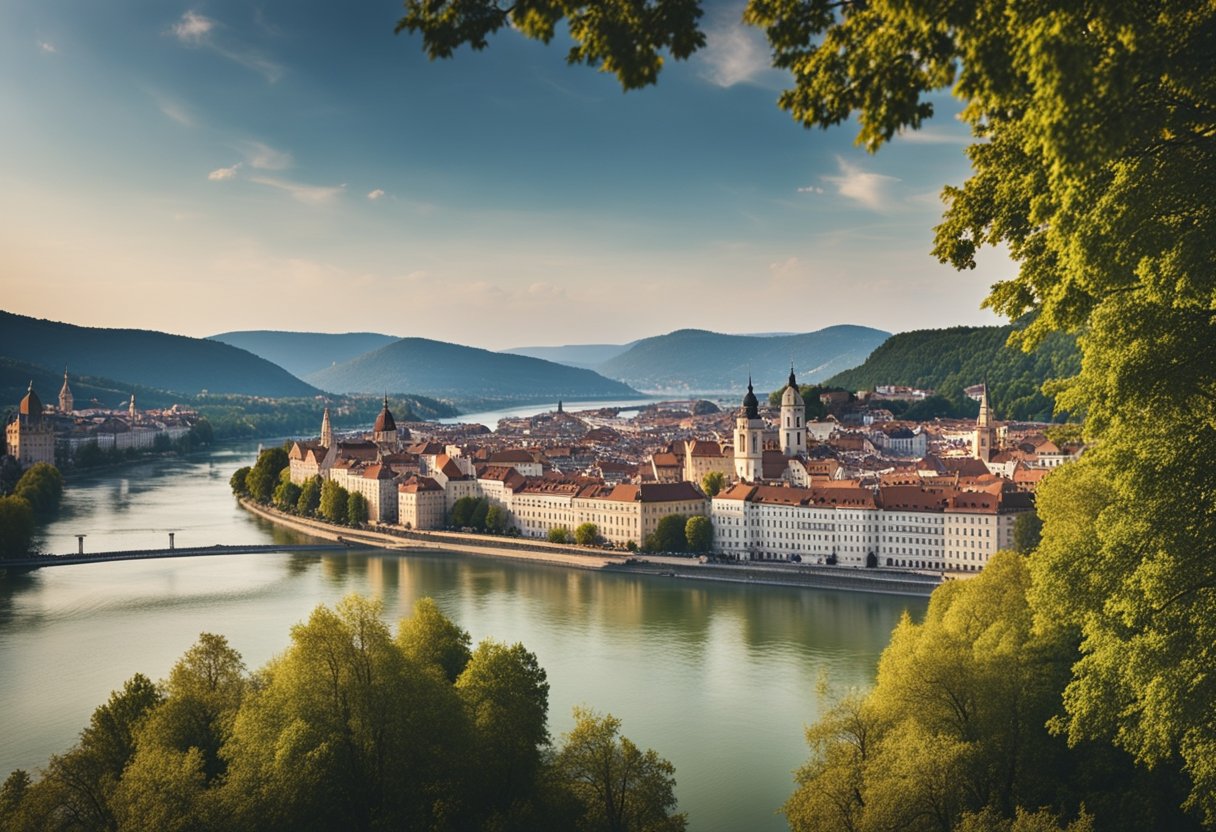
Updated On: April 17, 2024 by Marwa Alaa
Spanning more than 2,850 kilometres, the Danube River traverses the heart of Europe, cutting through 10 countries and four capitals. It serves as an integral waterway, framing the continent’s cultural and historical narrative while influencing its socio-economic dynamics. The river, often celebrated for its role in connecting people, has been a facilitator of trade and a natural border through the ages. It has witnessed a complex tapestry of interactions among the diverse communities that reside along its banks.
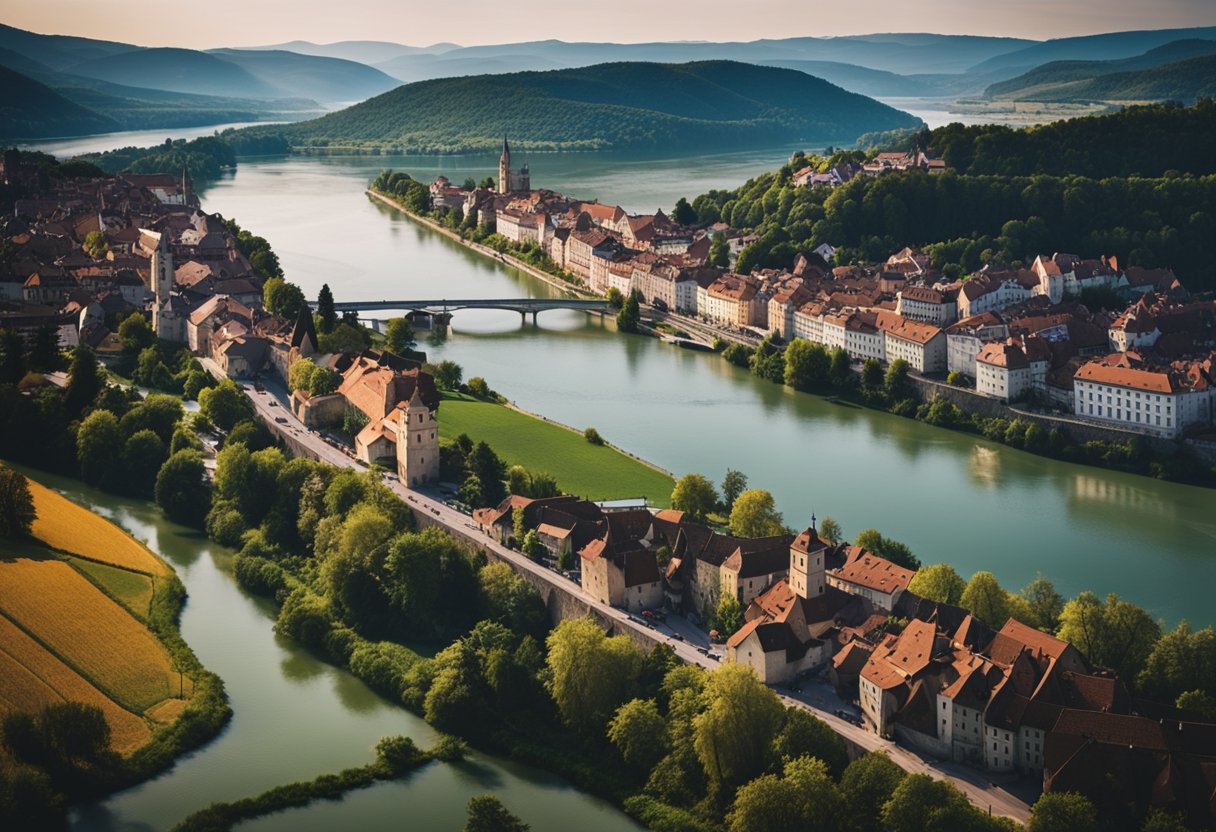
The Danube is steeped in history, having played a pivotal part in the shaping of European civilisation. From the time of the Roman Empire to the complexities of the modern era, its waters have been a silent witness to countless political developments and conflicts. Moreover, it has united a mosaic of cultures, fostering a unique form of cooperation transcending national borders. This cooperation is epitomised by the Danube River Protection Convention, which exemplifies the shared responsibility of the Danube countries over the last two decades.
Geographical Overview of the Danube River
The Danube River is a lifeline for the numerous cultures and countries through which it passes, serving not only as a vital source of water but also as a historical and cultural corridor.
Origin and Course
Originating in the Black Forest of Germany, the Danube embarks on an epic journey southeast across the European continent. Starting from Ulm, this magnificent river stretches over 2,850 kilometres before it concludes its course, weaving through vital regions and shaping the geography and lives of those along its banks.
Key Cities Along the Danube
As it traverses the diverse landscapes of Europe, the Danube River graces a number of key cities with its presence. Among them, Vienna, Budapest, and Belgrade stand out as cultural and economic hubs. These urban centres owe much of their development and historical affluence to the strategic placement along the river’s banks, facilitating commerce and cultural exchange.
The Danube Delta and Black Sea Region
The Danube Delta is where the river meets the Black Sea, creating one of the most biodiverse regions in all of Europe. This labyrinth of waterways, islands, and lakes forms the largest and best-preserved of Europe’s deltas. The delta’s territory is split between Romania and Ukraine, with the former Chilia branch being the most significant contributor to the river’s discharge into the Black Sea.
Historical Significance of the Danube

The River has been a significant artery for trade, culture, and military movements, influencing civilisations from antiquity to the modern era.
Ancient Civilisations and the Danube
The Danube served as a cradle for various ancient cultures, including the Danubian Neolithic cultures and the Linear Pottery Culture, known for its distinctive ceramics. Around the third millennium BC, these cultures thrived on the fertile banks of the Danube, fostering advancements in agriculture and society, which laid the groundwork for future European civilisations.
Empires and the Strategic Role of the Danube
Arguably, the Danube’s greatest historical role came under the Roman Empire, as it formed a vital border known as the Limes. It not only marked the edge of Roman control but also facilitated the movement of goods and military troops. Centuries later, the Ottoman Empire and the Habsburgs both vied for control over this pivotal waterway, leading to significant conflicts and shifts in power dynamics across Eastern and Central Europe.
During World Wars
During both World War I and World War II, the Danube again played a key strategic role. Its bridges and waterways were critical supply lines and strategic military targets for the Central Powers, the Axis, and the Allies. By providing a means to move troops and resources, it influenced several key operations and outcomes in both conflicts.
Cultural and Political Landscape
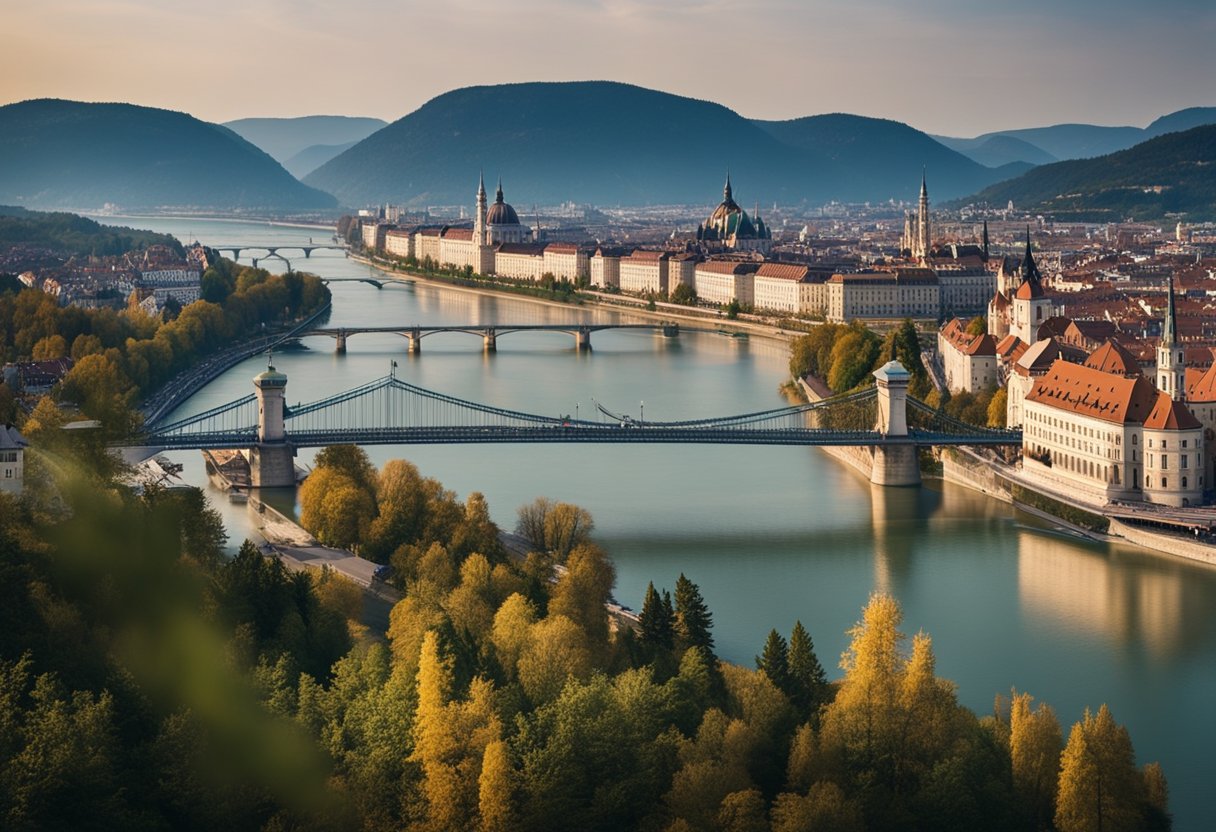
The Danube River serves as a dynamic artery through Europe, threading a rich tapestry of cultures together while bearing witness to the ebb and flow of political tides throughout history.
Diverse Cultures Along the Danube
The Danube winds its way through a variety of capitals—Vienna, Bratislava, Budapest, and Belgrade—each brimming with its unique mix of architectural grandeur and cultural narratives. Vienna, renowned for its classical music heritage, sits elegantly by the river, embodying the historical sophistication of the Austro-Hungarian Empire. Budapest, often referred to as the ‘Pearl of the Danube,’ dazzles with its stunning panorama and cultural depth, from thermal baths to flourishing arts scenes. Belgrade and Bratislava, each with turbulent pasts, now showcase a blend of socialist-era architecture and blossoming contemporary cultures.
As the Danube flows through Eastern Europe, it reaches into the hearts of nations steeped in history. Nations include Hungary, Romania, Bulgaria, Slovakia, Croatia, Moldova, Serbia, and Ukraine. Each country presents a cultural fabric abundant with diversity—the result of past empires and modern national identities clashing and converging. The riverbanks are storied with tales of the Bulgarian Empire, the struggle for unity in Moldavia, and the resilience of these nations in maintaining their cultural legacies amidst the influence of powerful neighbours like the Germans, Austrians, and Turks.
Political Conflicts and Cooperation
Through the centuries, the Danube has been at the heart of numerous conflicts and geopolitical changes, often mirroring the contentious history of Europe itself. From the Ottoman sieges to the battlegrounds of World Wars and the front lines of the Cold War, the countries along the river have had their destinies intertwined with the river’s course. The conflict has often transpired along its waters, most notably seen in the tug-of-war for influence between empires and nations over strategic locations and control of the river itself.
In contrast, it has also played a pivotal role in fostering cooperation. It is the central vein for the Danube Commission, an international body that promotes navigation and trade among Danube-bordering countries. The river also symbolises unity—as the European Union’s cohesion policy emphasises development and cooperation across member states, including many through which the river flows. This symbol of unity is vital for fostering dialogue and partnerships in a region historically fractured by deep-seated nationalistic and ethnic divisions. The river presents a binding landscape where diplomatic and economic bridges are built, showing that shared natural resources can pave the way for peace and mutual prosperity.
Economic Impact of the Danube
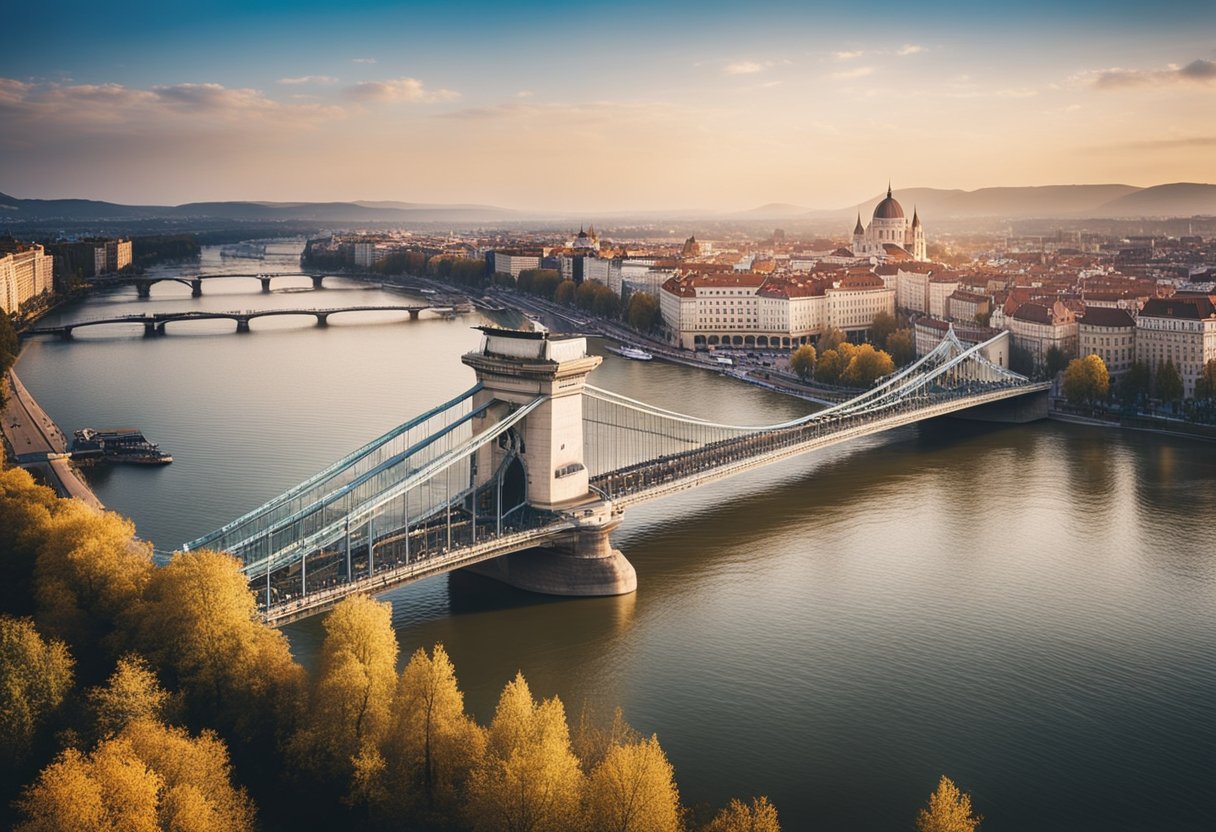
As we examine the economic impact, it’s clear that the Danube plays a crucial role in trade, industry, and regional development.
Trade and Navigability of the Danube
The Danube River serves as a vital commercial highway that links various European economies. Spanning across 10 countries from Germany to Ukraine, it is one of the most navigable rivers in Europe. The River Danube enhances trade as it allows ships to transport goods such as grain, construction materials, and oil. Additionally, the Danube River as Corridor VII has been identified as a significant pan-European transport route, facilitating shipping and boosting economic cooperation amongst the Danube countries.
Industry and Development Along the River
Industry thrives along the banks of the Danube, taking advantage of its geographic location and available water resources. The river supports not just the traditional sector but also modern industries, which benefit from the convenient shipping routes. Hydroelectric power stations harness the river’s energy, thus contributing to the region’s power supply while also mitigating fossil fuel reliance. Moreover, concerted efforts like the unique Danube-Tisa-Danube canal network in Serbia testify to how the river aids in both flood protection and land irrigation, accentuating the multifaceted nature of the river’s impact on local economies.
Environmental Aspects of the Danube
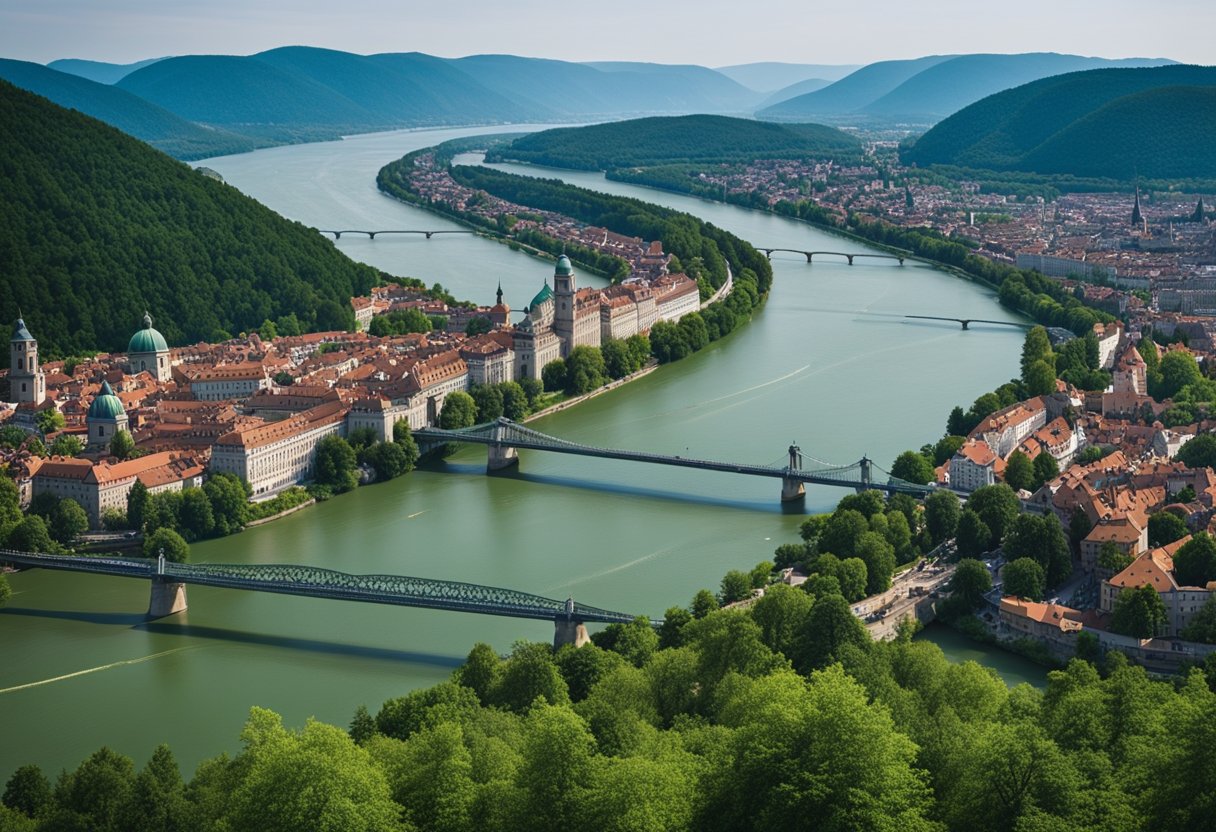
The Danube River spans a rich tapestry of biodiversity and is a lifeline for numerous European countries. It faces ecological challenges that necessitate immediate conservation efforts.
Biodiversity and Conservation Initiatives
The Danube is a haven for an abundance of species, serving as a critical habitat for fish, migratory birds, and diverse wetland ecosystems. Conservation initiatives are integral to preserving the river’s health, with efforts focusing on protecting its unique delta and marshes. Initiatives like the ICPDR’s Danube River Project work towards enhancing water quality and safeguarding biodiversity. Efforts include habitat restoration to benefit the wetlands and marshes that are home to rare and endangered species.
Pollution and Ecological Challenges
Despite its natural wealth, the Danube is plagued by pollution, which affects the river’s ecological balance. Industrial runoff, agricultural chemicals, and untreated wastewater contribute to the deterioration of water quality. Addressing these challenges involves cooperation from all countries along the river’s course to implement stringent pollution controls and promote sustainable practices. Moreover, the river’s environmental health is intertwined with socio-economic activities, from the fortresses dotting its banks to the communities relying on its waters. European nations are now increasingly acknowledging the need to collaborate to tackle these environmental challenges and protect the Danube’s precious resources for future generations.
Danube’s Infrastructure and Engineering
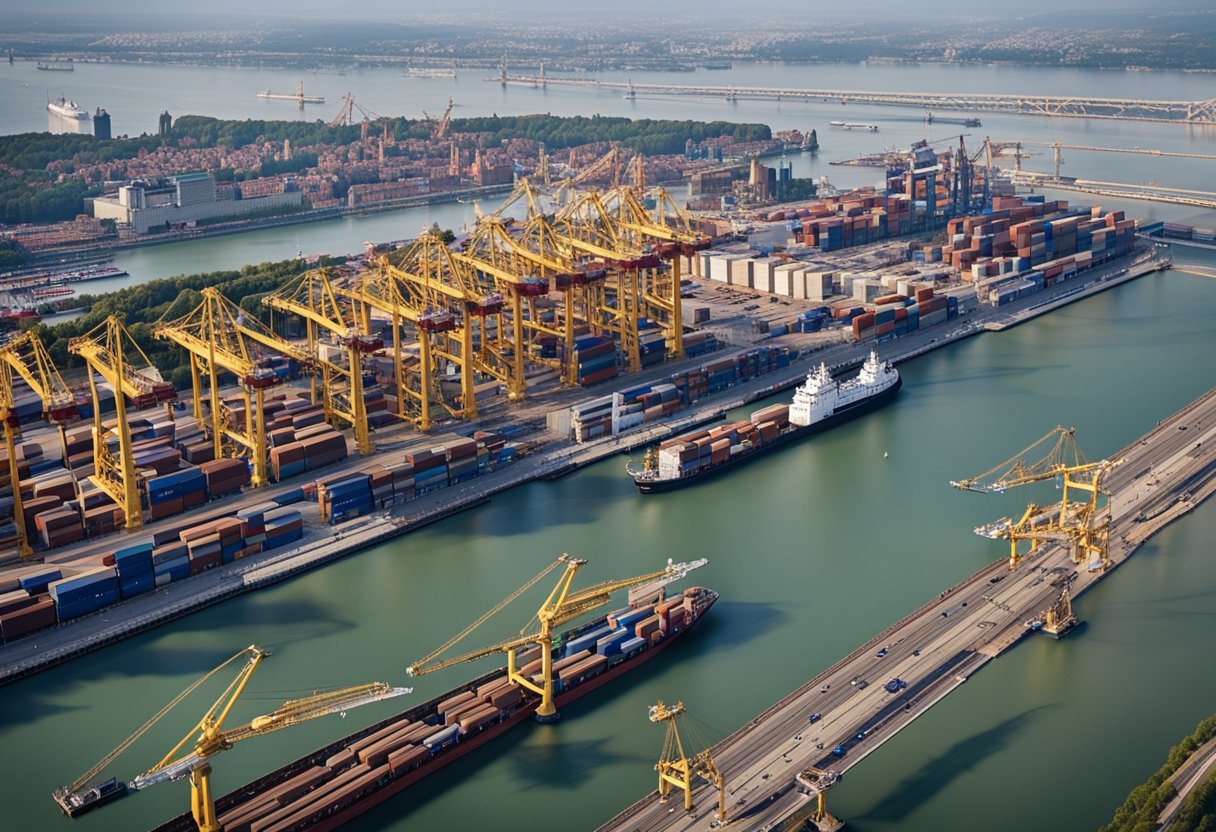
The Danube’s infrastructure is marked by impressive engineering works, including hydroelectric power projects and navigation systems that serve as arteries of commerce and energy.
Dams and Hydroelectric Power
The Danube River boasts a number of dams, playing a critical role in hydroelectric power generation. Among the most notable is the Iron Gate hydroelectric dam, located on the border between Romania and Serbia. This facility harnesses the colossal energy of the river, contributing significantly to the energy needs of the region. The impoundment of the river by such dams not only facilitates renewable energy production but has also been associated with alterations to the river’s natural flow and potential impacts on ecosystems.
Navigation Locks and Challenges
Navigation on the Danube is facilitated by a series of locks, which enable vessels to traverse the river’s varying water levels. Crucially, these locks maintain navigable channels and control flooding, which can be severe in this extensive watershed. However, navigating the Danube presents challenges, such as maintaining lock function and ensuring safe passage through constricted regions like the Iron Gate gorge. Continuous maintenance and adjustments of these infrastructures are required to cope with these challenges and ensure the smooth flow of river traffic across nations.
Recreation and Tourism
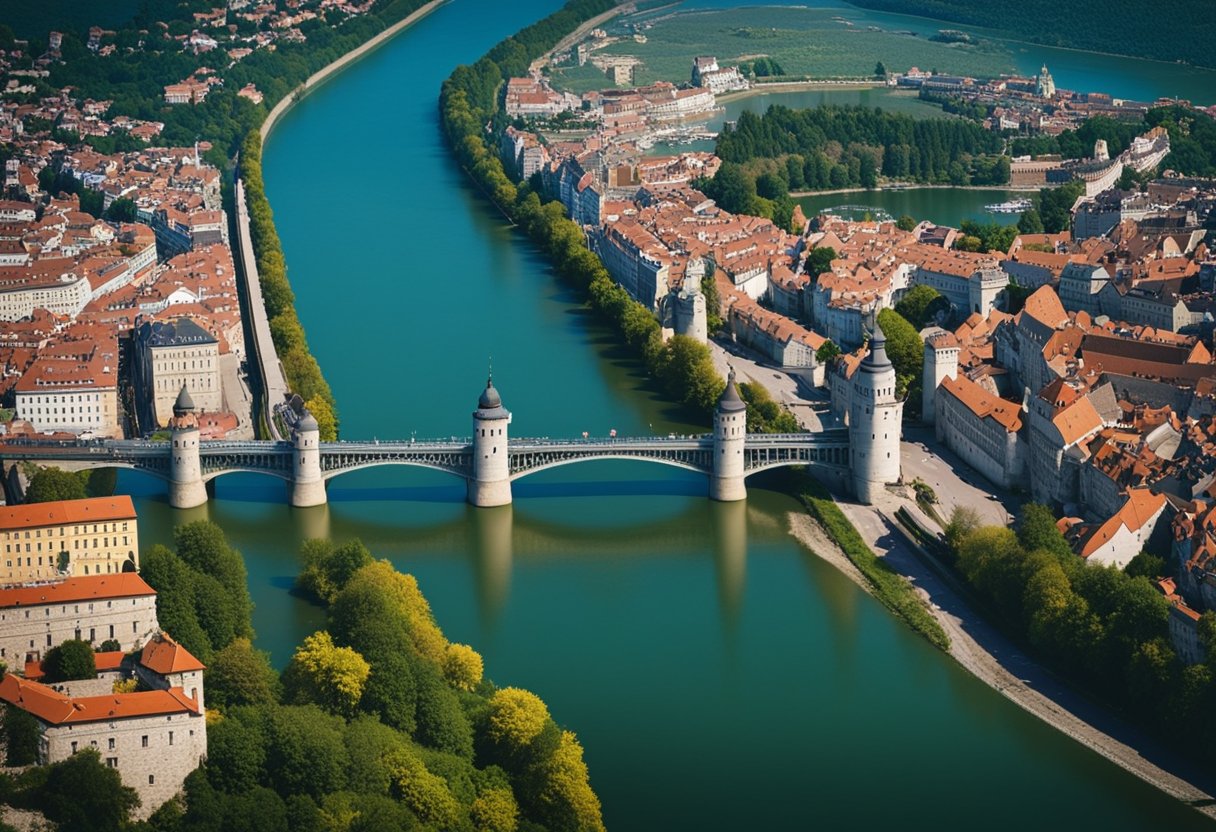
Navigating the Danube opens a world of experiences for leisure and culture enthusiasts. From the heart of bustling capitals to the serene backwaters teeming with wildlife, we are united by the vast array of recreational pursuits and historical grandeur that this mighty river offers.
Recreational Activities Along the Danube
The Danube invites a diverse array of recreational activities that cater to both the adventure-seeker and the serenity-chaser. In the bustling Budapest, thermal baths provide a unique blend of relaxation and socialisation, set against a backdrop of historic architecture. As you move along the river, opportunities for cycling and hiking unfold, particularly through the picturesque Wachau Valley, known for its vineyard-covered hills and quaint villages. On the water, kayaking and cruises reveal the scenic beauty and tranquillity that can only be experienced from the river itself.
Recreation by entity:
- Budapest: Thermal baths, city cruises
- Vienna/Bratislava: Cycling paths
- Wachau Valley: Vineyard tours, hiking
- Danube Delta: Birdwatching, fishing
Cultural Tourism and Heritage Sites
Our journey through cultural tourism along the Danube showcases a tapestry of the historic and the sublime. Capital cities like Vienna and Bratislava are hubs of cultural heritage, with their opulent palaces and historic town centres. An exploration of castles and fortresses—remnants of former battles and bygone eras—beckons history buffs. Meanwhile, Csepel Island in Budapest offers an authentic slice of Hungarian life away from the tourist trail. Further downstream, the Danube Delta is not only a haven for fishermen and nature lovers but also a UNESCO World Heritage site that boasts a unique blend of culture and biodiversity.
Cultural spots by entity:
- Vienna: Schönbrunn Palace, Opera House
- Bratislava: Bratislava Castle, Old Town
- Csepel Island: Local goods, artisan workshops
- Danube Delta: Traditional fishing villages, unique ecosystems
Embark on a voyage along the Danube, and discover our shared heritage that flourishes alongside the ebb and flow of one of Europe’s greatest rivers.
Rivers and Human Settlement
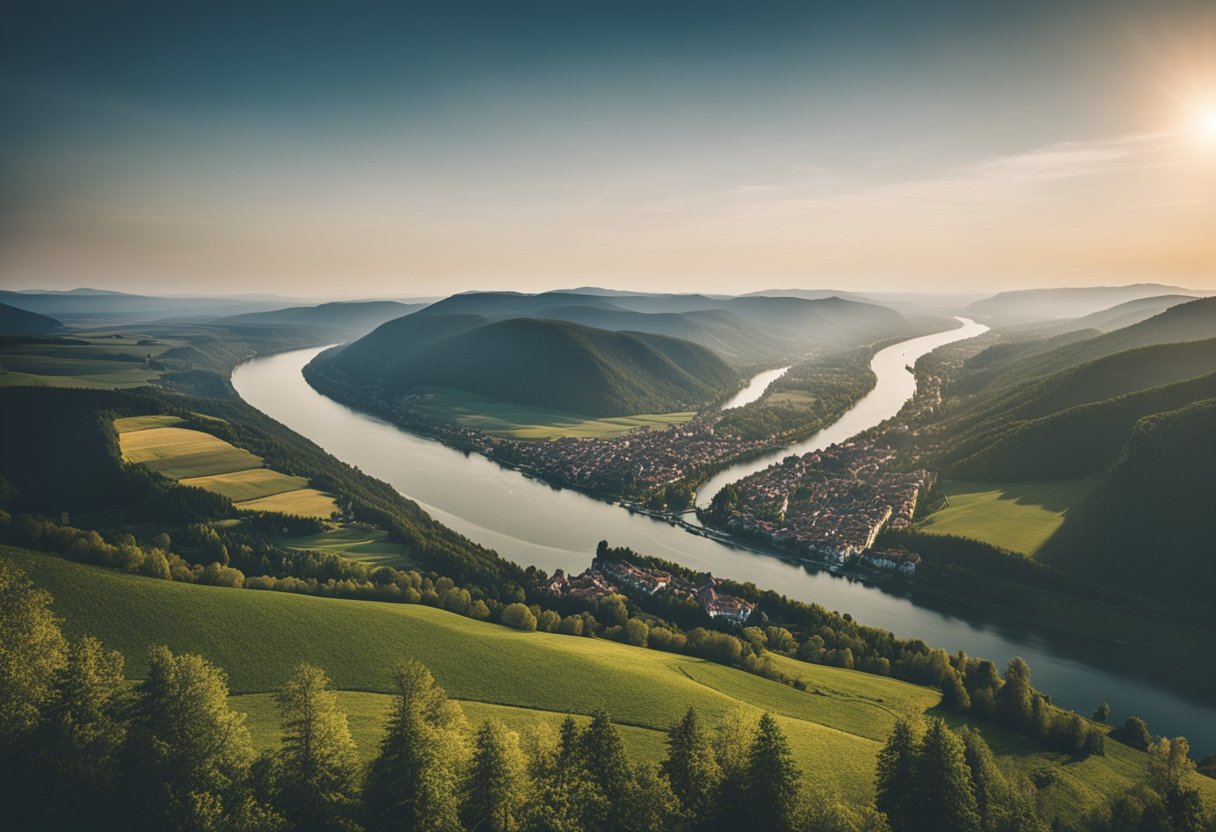
When we consider the development of civilisations, rivers often lie at their heart, serving as lifelines. The Danube, for instance, has been pivotal in shaping human settlement from ancient times to the modern era.
Urban Development Along the Danube
The Danube flows through major cities like Vienna, Budapest, and Belgrade, where it has enabled a thriving blend of culture and commerce. In Vienna, the river’s banks are a testament to a rich history of urban growth, with the city’s beautiful architecture reflecting its past and present. Budapest, split by the Danube into Buda and Pest, showcases how rivers can define a city’s geography while driving industrial development. Further down, in Belgrade, the river meets the Sava and has historically been a point of both strategic military encounters and trade.
Rural Livelihoods and Agriculture
Beyond the bustling cities, rural areas along the Danube, like those near Vidin and Galați, depend heavily on the river for agriculture and fishing. Farmers utilise the fertile floodplains for crops, while towns like Tulcea serve as gateways to the river’s delta and the valuable ecosystems within. Here, fishermen continue traditional practices that have been passed down through generations, extracting sustenance from the river while facing modern challenges like industrial influence and environmental changes.
Interconnectedness of European Rivers
The web of waterways across Europe is a testament to the continent’s rich tapestry of interlinked river systems. They’ve shaped both its cultural tapestry and geographic contours.
Tributaries and Their Role
The Danube River, renowned for its immense cultural significance, boasts an extensive network of tributaries that play crucial roles in enriching its diversity. These include rivers such as the Drava, Tisza, and Sava, whose confluence points mark crucial economic and ecological intersections. Specifically, the Sava serves as a key tributary, fostering regional cooperation and biodiversity as it joins the Danube at Belgrade. It’s here that one can appreciate the Sava’s contribution to the greater Danube Basin.
Similarly significant, the Tisza shapes the middle course of the Danube through major European regions, bringing with it waters from lesser-known streams and shaping economies from its source to its endpoint. Each tributary weaves a unique thread into the fabric of the broader river system, supporting diverse ecosystems and human settlements along their banks.
Comparison with Other Major European Rivers
When casting our gaze across the continent, we observe that the Danube, while unique, shares its interconnected nature with other great rivers like the Rhine and the Volga. The Rhine connects with vital waterways such as the Aare, Neckar, and Main, underpinning a significant part of Western Europe’s trade and infrastructure.
The vastness of the Volga, Europe’s longest river, eclipses that of the Danube. With its substantial flow into the Caspian Sea and its plethora of tributaries, the Volga stands as a central artery for Eastern Europe, facilitating commerce, culture, and community in a similar yet distinctive manner to the Danube.
Through our tributaries, we are intricately bound to one another, our rivers acting as veins that pump life through the continent’s heart. Cities like Ruse, a major port on the Danube’s banks in Bulgaria, epitomise the vibrancy that these interconnected rivers bring to European civilisation. From the upper course of rivers that forge through landscapes, shaping them since time immemorial, to vast waterways that serve as economic lifelines, the interconnectedness of our rivers is a narrative of unity and diversity, eternally flowing, constantly evolving.
The Danube in Literature and Art
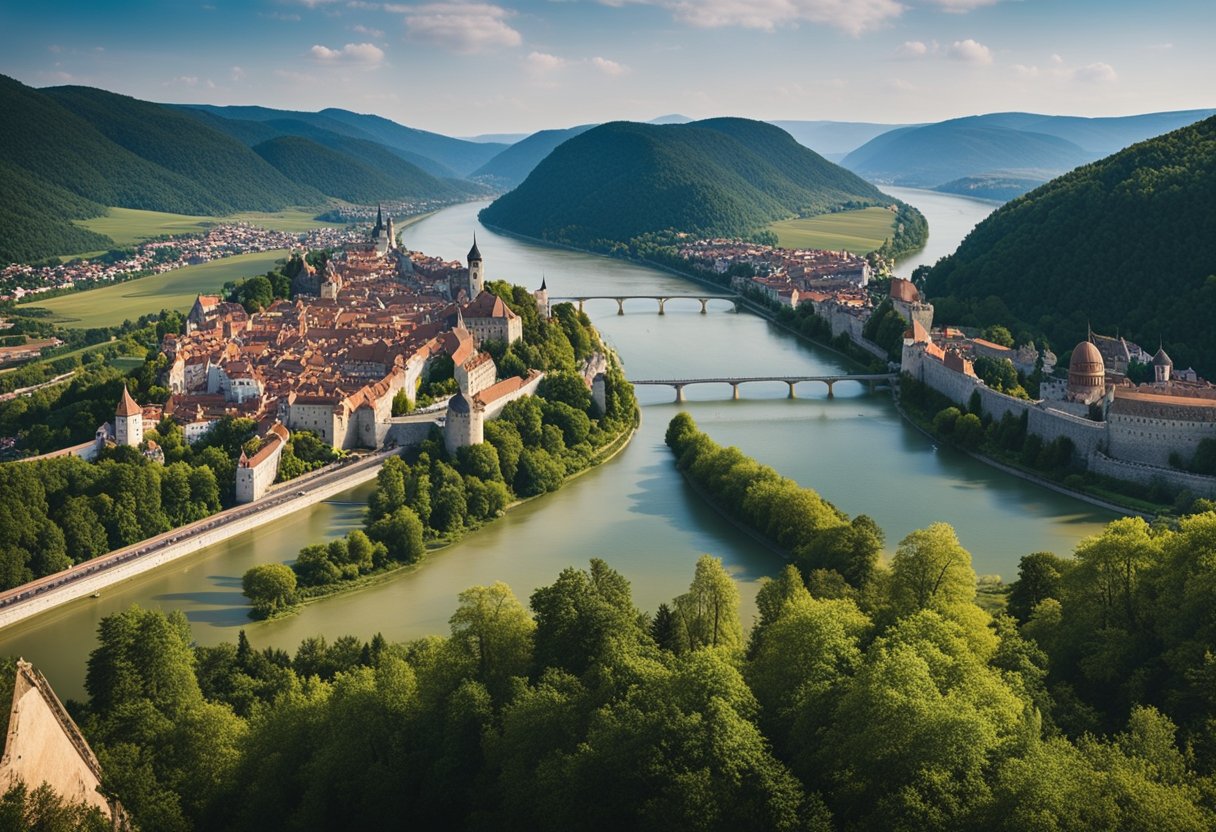
The Danube River, Europe’s second-longest river, has etched its way not only through the continent’s landscape but also through its cultural and artistic heritage. This waterway has been a muse for creators, encapsulating the essence of European diversity and history within their works.
Literary Significance
Literature has paid homage to the Danube, with authors drawing inspiration from its sweeping journey through cities like Vienna, Budapest, and Belgrade. The river’s presence in narratives often symbolises the ebb and flow of human experiences and cultural exchanges. In Claudio Magris’s Danube, it is depicted as a route to understanding lost European identities.
Artistic Depictions
Artists, too, have found a rich subject in the Danube’s waters. The visual arts have captured the river’s shifting moods and its impact on surrounding communities, reflecting the interplay of nature and human development.
- Cultural Representation: The Danube’s role in shaping cultural identities is well documented through depictions of daily life and the melding of different societies along its banks.
- Historic Moments: Artistic renditions have recorded significant events, spotlighting the river’s role in conflicts and cooperation across epochs.
Influence on the Arts
As our explorations expand beyond Ireland, we appreciate how the Danube’s cultural representation extends to various forms of art. The river itself becomes a canvas, telling myriad stories of unity and division, peace and strife, that trace back through Europe’s collective memory.
Our journey through the Danube’s influence on art and literature reveals not a mere waterway but a symbol of Europe’s rich tapestry. The diversity along its course—from the Black Forest to the Black Sea—echoes within the artistic community, inspiring works that resonate with the heart of European identity.
Frequently Asked Questions
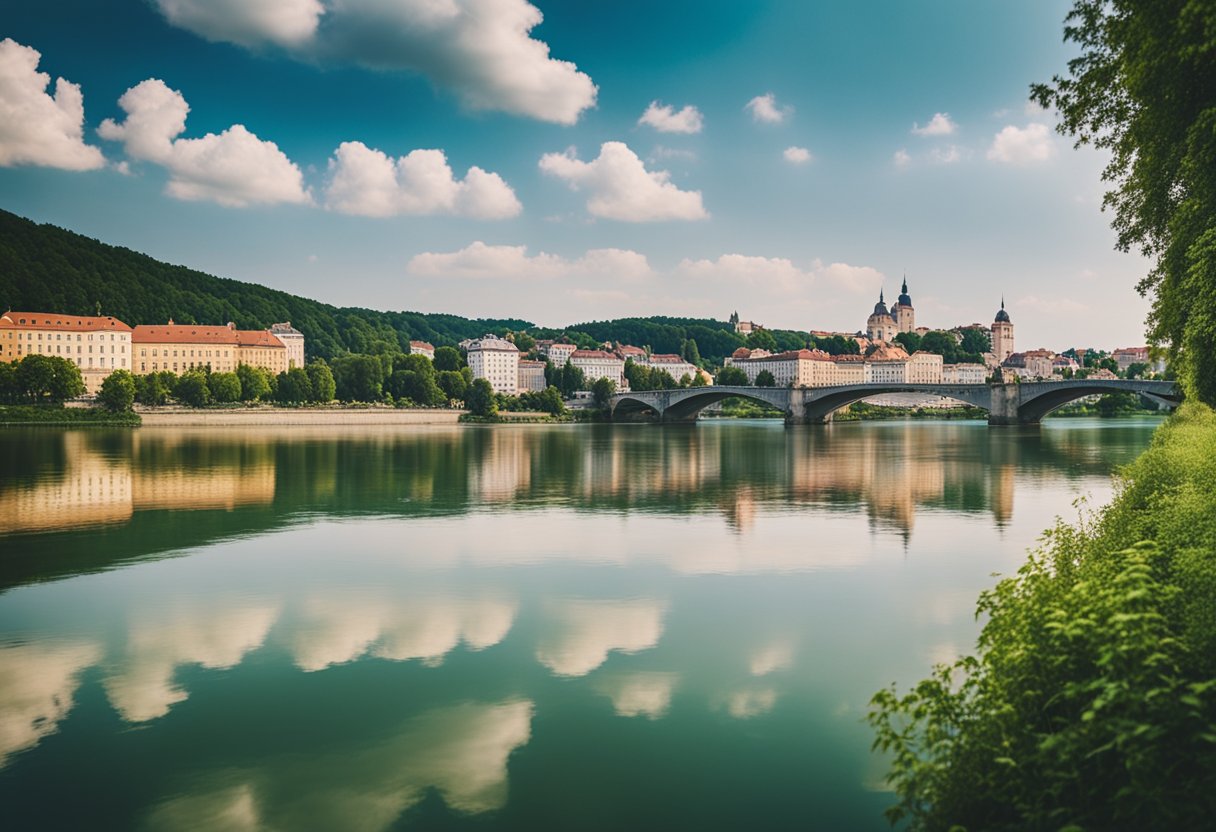
The Danube River has long been a major European artery, flowing through diverse cultures, shaping economies, and presenting complex environmental and geopolitical challenges.
How has the Danube River played a role in shaping European culture?
The Danube has been a crucible for cultural development, nurturing various civilizations throughout history. It passes through cities rich in cultural heritage, such as Vienna, Bratislava, Budapest, and Belgrade, influencing architecture, music, and literature.
What are the primary sources of conflict along the Danube River?
Conflicts along the Danube often arise from disagreements over water management, usage rights, and environmental concerns. Nations along the river have historically contended for dominion and control over its strategic significance.
In what ways has the Danube River been a platform for cooperation among European countries?
Despite its history of conflict, the Danube has also been a catalyst for collaboration, fostering cooperative efforts in navigation, environmental protection, and sustainable development through bodies like the International Commission for the Protection of the Danube River.
What economic benefits does the Main Danube Canal offer to the regions it connects?
The Main-Danube Canal has been pivotal in linking North Sea and Black Sea trade routes, enhancing economic interactions and enabling the seamless movement of goods between regions, heightening the economic potential of riverine cities.
What environmental challenges is the Danube River currently facing?
The Danube grapples with issues like pollution from agricultural run-off, industrial waste, and the pressures of urbanisation, requiring concerted efforts to mitigate impacts on the river’s biodiversity and overall health.
Which nations bordering the Danube have historic or ongoing disputes over its use?
Historic and ongoing disputes have involved countries such as Hungary, Serbia, and Croatia, where issues of navigation rights, resource allocation, and environmental management have been at the fore.






